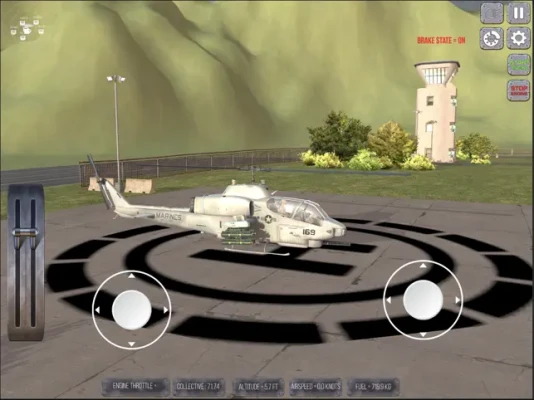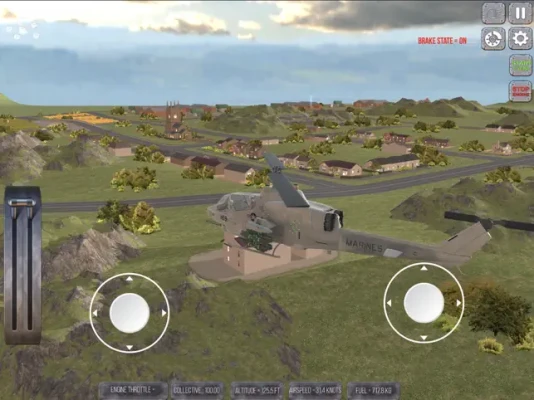
Latest Version
1.1
April 25, 2025
Meriç İnternet Teknolojileri A.Ş.
Games
iOS
292.4 MB
0
Free
Report a Problem
More About Helicopter Search Simulator
The Ultimate Guide to Helicopter Operation: Mastering the Skies with Ease
Operating a helicopter may seem daunting at first, but with the right knowledge and practice, it becomes an exhilarating experience. This guide will walk you through the essential aspects of helicopter operation, focusing on the simplicity of steering with joysticks and other critical components that contribute to a smooth flight.
Understanding Helicopter Controls
Helicopters are equipped with a variety of controls that allow pilots to maneuver effectively. The primary control mechanism is the joystick, which plays a crucial role in steering the aircraft. Understanding how to use these controls is vital for any aspiring pilot.
The Joystick: Your Primary Tool for Navigation
The joystick, often referred to as the cyclic control, allows pilots to tilt the helicopter in various directions. By pushing the joystick forward, backward, or sideways, you can control the helicopter's pitch and roll, enabling it to ascend, descend, or turn. Mastering the joystick is essential for achieving precise movements in the air.
The Collective Control: Elevating Your Flight
In addition to the joystick, helicopters feature a collective control, which adjusts the pitch of the rotor blades collectively. This control is crucial for changing altitude. Pulling the collective up increases lift, allowing the helicopter to rise, while pushing it down decreases lift, enabling descent. Understanding the interplay between the cyclic and collective controls is key to smooth and controlled flight.
Essential Techniques for Helicopter Operation
To become proficient in helicopter operation, pilots must practice several essential techniques. These techniques not only enhance flying skills but also ensure safety during flight.
Hovering: The Art of Staying Still
Hovering is one of the most challenging yet rewarding maneuvers in helicopter flying. It requires a delicate balance of cyclic and collective controls to maintain a stable position in the air. Pilots must constantly adjust their inputs to counteract wind and other environmental factors. Practicing hovering will significantly improve your overall flying skills.
Turning and Banking: Navigating with Precision
Turning and banking are fundamental maneuvers that allow pilots to change direction smoothly. To execute a turn, pilots must tilt the joystick in the desired direction while simultaneously adjusting the collective to maintain altitude. This combination of controls ensures a controlled and efficient turn, essential for navigating through various flight paths.
Safety Considerations for Helicopter Pilots
Safety should always be a top priority for helicopter pilots. Understanding the potential risks and implementing safety measures can prevent accidents and ensure a successful flight experience.
Pre-Flight Checks: Ensuring Aircraft Readiness
Before taking off, pilots must conduct thorough pre-flight checks. This includes inspecting the helicopter's mechanical systems, fuel levels, and safety equipment. A comprehensive pre-flight checklist helps identify any issues that could compromise safety during flight.
Weather Awareness: Flying Smart
Weather conditions play a significant role in helicopter operation. Pilots must stay informed about current weather patterns and forecasts. Adverse weather, such as strong winds or low visibility, can pose challenges during flight. Always prioritize safety by avoiding flying in unfavorable conditions.
Conclusion: Embrace the Thrill of Helicopter Flying
Operating a helicopter is an incredible experience that combines skill, precision, and a love for adventure. By mastering the use of joysticks and understanding the various controls, you can navigate the skies with confidence. Remember to prioritize safety and practice regularly to enhance your flying abilities. With dedication and passion, you can become a proficient helicopter pilot, ready to explore the world from above.
Rate the App
User Reviews
Popular Apps










Editor's Choice




























